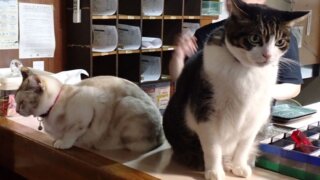Recommended must-see sightseeing spots when you visit to Shiga!
Other than classics, there are also hidden sightseeing spots that are known only among locals!
Contents
Not only Lake Biwa! Shiga Has Many Sightseeing Spots
Shiga Prefecture expands as if surrounding Lake Biwa.
There are numerous spots scattered round, which gather high attention even among in Japan, including “Hikone-jo Castle” of the national treasure, and “Hieizan Enryakuji Temple” of UNESCO World Heritage.
Besides spots like “Kurokabe Square” that utilizes historical constructions and the good-old “Suigo Meguri Omihachiman (Boat Tour on Omihachiman Moat)”, there are lined up with popular spots among young generation, including “The Biwako Terrace”, a mountain resort that overlooks Lake Biwa, and “La Collina Omihachiman”, a complex facility that gathers attention.
If you visit around not just classic spots but also hidden sightseeing spots, you can surely fully enjoy the broad appeals of Shiga!
Hieizan Enryakuji Temple / Otsu City

“Hieizan Enryakuji Temple”, the head temple of Tendai sect, was opened by Dengyo Daishi, Saicho.
It consists of three towers and sixteen valleys, and there are several hundreds of temple halls and buildings scattered around.
It is also a scenic spot, where you can view Lake Biwa under your eyes and where in west you can overlook townscape of the old Capital Kyoto, and it is registered as UNESCO World Cultural Heritage, with being highly regarded the history and tradition of 1200 years.
Cable cars and driveways are well developed among Hieizan Mountains, so you can easily enjoy observing the temples of course, and also walking in the nature and exploring historical sites.

Hours for pilgrimage
To-do(east) area/ 8:30AM to 4:30 PM (March to November), 9AM to 4PM (December), 9AM to 4:30PM (January and February)
Sai-to(west), Yokawa Areas/ 9:AM to 4PM (March to November), 9:30AM to 3:30PM (December), 9:30 to 4PM (January and February)
* Reception of pilgrimage is until before 30 minutes of close.
Admissions
Common for To-do, Sai-to, and Yokawa areas/ Adults 700 Yen, Junior high and High school students 500 Yen/ Elementary school students 300 Yen
Access
[By train] Getting off at the last stop of Sakamoto Cable that is about 10 minute walk from “Sakamoto Hieizan Guchi” station of Keihan Ishiyama Sakamoto Line, and take about 10 minute walk (till To-do)
The Biwako Valley, The Biwako Terrace / Otsu City


“The Biwako Valley” is located where you go riding on the superb view ropeways to the summit of 1,100 meter elevation.
Next to that summit station, “the Biwako Terrace” was opened in 2016, where you can fully enjoy the superb view of Lake Biwa.
From the terrace of wooden deck, you can overlook the Japan’s number one lake from south to north, so it is so popular among ladies as you can shoot instagrammable photos!
At cafes and restaurants, you can enjoy dishes and original desserts used products particularly of Shiga Prefecture, and there are fulfilled with activities, including Zip Line Adventure, adventure play grounds, and dog run parks.
It is opened as a ski resort in winter, and you can enjoy skiing and snowboarding, while viewing the superb view of Lake Biwa.



Opening hours
Ropeways/ 9:30AM to 5PM (From 9AM on Sat/Sun/holiday and in August)
The Biwako Terrace Cafe/ 9:40AM to 3:30PM (Last order) (From 9:10AM on Sat/Sun/holiday)
Business Holiday
In 2019, it is closed during March 25 to April 5, April 22 to 26, June 24 to 28, September 2 to 6, and from November 25 until Late December of the day when the ski resort opens.
Admission and fare
Ropeways (round trip)/ Adults 2,600 Yen, Elementary school students 1,000 Yen, Toddlers (three year old and above) 600 Yen
The Biwako Terrace/ Free admission
Access
[By train] Right after getting off at “Biwako Valley” stop of a bus from “Shiga” station of JR Kosei Line
Hikone-jo Castle / Hikone City


The castle was completed by Naotsugu and Naotaka, who inherited the last wishes of Naomasa, the founder, over for nearly 20 years of time.
It is designated as the national treasure, together with Himeji-jo Castle, Matsumoto-jo Castle, Inuyama-jo Castle, and Matsue-jo Castle.
Inside the castle, there are still existing the same appearances of that time, including the castle tower of three layers of chalk, corner towers of the importance cultural treasure, Genkyuen Park as a garden of suburban residences, and an inner moat and an intermediate moat.
The houseboat tour around on the moats is also one of popular attractions.
Opening hours
8:30AM to 5PM. Opens everyday.
Business Holiday
In 2019, it is closed during March 25 to April 5, April 22 to 26, June 24 to 28, September 2 to 6, and from November 25 until Late December of the day when the ski resort opens.
Admission
For observation (Hikone-jo Castle and Genkyuen Garden)/ Adults 800 Yen, Junior high and Elementary schools students 200 Yen * Required to show student’s notebook for junior high school students.
Fare for houseboat/ Adults 1,300 Yen, Children 600 Yen (During the periods of cherry blossom festival from April 1: Adults 1,500 Yen, Children 700 Yen)
Access
[By train] About 15 minute walk from “Hikone” station of JR Biwako Line
Ishiyama-dera Temple / Otsu City


“Ishiyama-dera Temple”, the 13th holy site of the Saikoku 33 Kannon Pilgrimage.
* The pilgrimage of thirty-three temples dedicated to Kannon (the deity of compassion) scattered around the Saikoku (west Japan) region.
It is the temple of Kannon faith, miraculous for easy delivery of a child, for fortune-happiness and prosperity, and for good marriage.
In the spacious temple ground, there are numerous temple halls built on wollastonite that is the natural monument, which is the origin of the temple name (The name of “Ishi” means a stone. Since wollastonite is stones, it is the origin of name of “Ishi”.), and there are lined up in the landscape with the main temple building that is the national treasure, and two-story pagodas, etc., and these harmonize with nature.
It is also known as the place where Murasaki-Shikibu started writing “Genji Monogatari“, and is also famous for the scenic place of plum blossoms, cherry blossoms, autumn leaves, and the moon.
* Genji Monogatari: The Tale of Genji (a classic work of Japanese literature written by Murasaki-Shikibu.)
Opening hours
8AM to 4:30PM (Last entry to mountain at 4PM). Opens everyday.
Admission
Junior high school students and above 600 Yen, Elementary school students 250 Yen
Access
[By train] About 10 minute walk from “Ishiyamadera” station of Keihan
Oumi Jingu Shrine / Otsu City
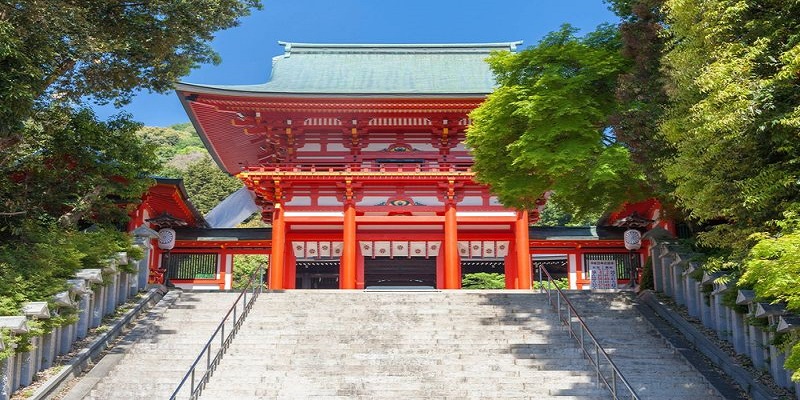

“Oumi Jingu Shrine” is the shrine where Emperor Tenji (626 to 672), who built Capital Otsu-kyo, is enshrined.
It also has the history as the origin place of time-system of Japan.
As it was said that the Emperor Tenji, who set roukoku (water clock), announced the time for the first time to nationals, June 10th has been enacted as “the Time Day”.
On June 10th, “Roukoku-sai Festival”, to which gather people related with clocks and watches of nationwide, is held.
At a corner of the shrine ground, there are also “Oumi Jingu Shrine Clock and Treasure Museum”, where exhibit clocks of in and outside of Japan and treasures collected at Oumi Jingu Shrine.
Also, Emperor Tenji left the tanka-poem at the beginning of “Ogura Hyakunin-isshu (the Ogura Anthology of One Hundred Tanka-poems by One Hundred Poets)”.
As the result, Oumi Jingu Shrine is also called as “Karuta (traditional Japanese playing cards) hall of fame”.
There have been held tournaments of competition for Japan’s number one Karuta championship, and it is also popular as the sacred place of “Chihayafuru” that became also a movie.
* Tanka-poem by Emperor Tenji:
Coarse the rush-mat roof
Sheltering the harvest-hut
Of the autumn rice-field;
And my sleeves are growing wet
With the moisture dripping through.
– Quoted from “University of Virginia Library Japanese Text Initiative, Ogura Hyakunin Isshu 100 Poems by 100 Poets”
Visiting hours
6AM to 6PM. Opens everyday.
(Clock and Treasure Museum/ 9:30AM to 4:30PM *Last admission at 4:15PM. Closed on Monday if not holiday.)
Admission
Free of charge
(Clock and Treasure Museum/ Adults 300 Yen, Junior high and Elementary school students 150 Yen)
Access
[By train] About 9 minute walk from “Oumi Jingu mae” station of Keihan
Hachiman-bori boat cruise / Omi Hachiman City


“Suigo Meguri (boat tour on moat)”, the specialty of Omihachiman sightseeing and one of eight famous sites of Lake Biwa.
It is said that it started by imitating graceful play of imperial court for healing fatigue in the Sengoku world by Nobunaga Oda and Hidetsugu Toyotomi.
You will tour around by a houseboat the moats, where reed colonies and farms and fields show expressions by four seasons.
There are several boat companies, and besides four places of Kitanosho-Town, Maruyama-Town, Shirao-Town, and Nakanosho-Town, there is also Osugi-Town boat boarding place that tours around Hachiman-bori moat, the famous place.



Departure time of scheduled boats
From 10AM (Different from depending on the boat companies.)
To make a reservation, see this site.
Fare
Scheduled boat for Suigo Meguri/ Adults 2,000 Yen, Children 1,000 Yen (excluding Tax)
Hachiman-bori Meguri/ Adults 1,000 Yen, Children 500 Yen (excluding Tax)
Access
[By train] Take Omi-Tetsudo Bus from “Omi-Hachiman” station of JR Biwako Line
* Please refer to HP of each boat company as bus stops for boarding places are different.
Azuchi-jo Caslte Ruins / Omi Hachiman City


In the Tensho 4 (1576), Nagahide Niwa completed the Azuchi-jo Castle over with about three years by an order by Nobunaga Oda.
After Nobunaga was defeated at the incident of Honnoji Temple, it was burnt out together with the castle town, and today, stone walls and base stones remind of looks of that time.
It is located on the top of Azuchi-yama Mountain of about 200 meter elevation, and it takes about 25 minute walk to the tower castle ruins from the entry point of mountain.
In the castle ruins, there remain so-told samurai residence ruins of Hideyoshi Hashiba and of Toshiie Maeda.
Opening hours
9AM to 4PM (Varies by seasons). Opens everyday.
Admission
Adults 700 Yen, Children 200 Yen
Access
[By train] About 25 minute walk from “Azuchi” station of JR Biwako Line
Kurokabe Square/ Nagahama City


“Kurokabe(black wall) Square” is an area with characteristics of good-old elegant townscape, along Hokkoku Kaido Road.
With its center of “Kurokabe 1 go kan/ Kurokabe Glass Shop”, which was utilized the building of Dai-hyaku-sanju-ginko bank, Nagahama branch, which was built in the Meiji 33, there are lined up with about 30 facilities, including glass shops, galleries, glass workshops, experience classes, restaurants and cafes.
It is a charm that you can also enjoy experiencing glass workshops, including blown glass and stained glass.



Business hours
10AM to 6PM (Varies depending on facilities and periods). Opens everyday (Closes on and around the New Year’s Day)
Access
[By train] About five minute walk from “Nagahama” station of JR Hokuriku Line
Lake Biwa Museum / Kusatsu City
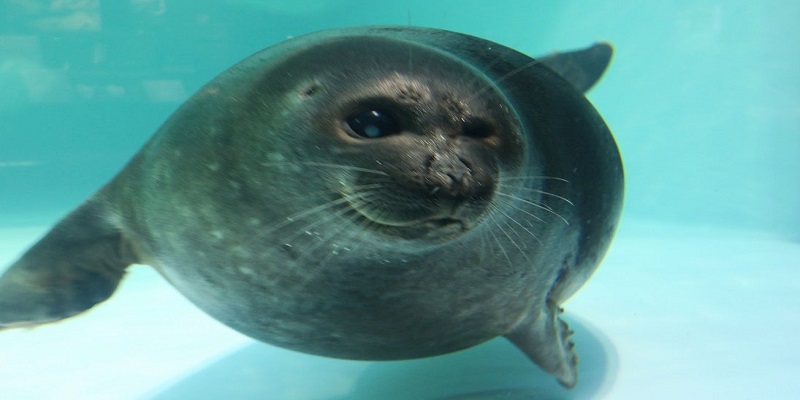

“Lake Biwa Museum” is an experiencing style museum, where you can learn history of Lake Biwa and relationship between people and living things, with the theme of “people and the lake”.
It is proudly one of the largest classes in Japan as exhibits of living things of fresh water.
The tunnel aquarium of fresh water fish, the real-size diorama that reproduced the state around the lake in ancient times, and Baikal seals that you can see only in here, are must-sees.
Also, you can taste black bass dishes and catfish dishes in a restaurant.
Opening hours
9:30AM to 5PM (Last admission at 4:30PM). Closed on Monday (opens if holiday), and may close temporarily.
Admission
General 750 Yen, High school and college students 400 Yen, Junior high and elementary school students Free of charge
Access
[By train] Right after getting off at “Biwako Hakubutsukan” stop of Omi Kintetsu Bus, from “Kusatsu” station of JR Biwako Line
Taga Taisha Shrine / Taga Town


”Taga Taisha Shrine” is the number one taisha shrine of Shiga Prefecture, where enshrine Amaterasu Omikami and the parents, Izanagi No Mikoto and Izanami No Mikoto.
As Gods of long-lives, good marriages, and warding-off of evils, it has been worshiped by many people since the past, and is still loved with a common-name of “Otaga-san”.
It is said that faith of Hideyoshi Toyotomi was deep, and it is told that Taiko-bashi Bridge and Okushoin-teien Garden in the shrine ground was built by his dedication, with praying for healing sick of O-Mandokoro, his mother.
Opening hours
8AM to 4PM
Admission
Free for visiting (Admission for visiting the garden 300 Yen)
Access
[By train] About 10 minute walk from “Taga-Taisha mae” station of Omi-Tetsudo
Lake Biwa Hana-Funsui (water fountains like flowers) / Otsu City


Located on the offshore breakwater of Otsuko Port, a gateway of Lake Biwa, it is the water fountains of the world’s largest class with 440 meter horizontal length.
It spouts up to the height of 40-meter, which is equivalent height of 10 stories building, while changing in various shapes by time.
After the sunset, it will be illuminated in three colors of green, orange and white, so it is also popular as a nightscape spot where you can enjoy romantic water shows.
Event schedule time of water fountains shows
12PM to 1PM (throughout a year), 3PM to 4PM (only on Sat/Sun/holiday), 6PM to 7PM (varies depending on season).
* Close on the second and the forth Wednesday for maintenance.
Access
[By train] About three minute walk from “Biwakohama Otsu” station of Keihan.
La Collina Omihachiman / Omi Hachiman City


Since its establishment in 1872, “Taneya”, a confectionery maker, transmits always innovative and delicious Japanese western confectioneries to people, including baumkuchen of “CLUB HARIE”.
“La Collina Omihachiman” is a complex facility that consist of facilities of that Taneya group, including shops, cafes, and farms.
In the site reproduced the original landscape of Omi, there are lined up beautiful buildings, named as “Kusayane (thatched roof)” and “Kurihyappon (100 chestnut trees)”, which are designed by Mr. Terunobu Fujimoto, an architect.
Opening hours
9AM to 6PM (Varies depending on facilities. At Cafe, last order at 5PM). Closed only on the New Year’s Day.
Admission
Free of charge (Required separate fee for joining to tours.)
Access
[By train] Getting off at “Kitanosho La Collina mae” of Omi Tetsudo Bus, from “Omi Hachiman” station of JR Biwako Line
MIHO MUSEUM / Koka City


”MIHO MUSEUM” was designed by Mr. I.M. Pei, who is known to the world for the glass pyramid of the Louvre Museum in Paris.
It also gathered attention of worldwide as “Louis Vuitton” held a show here in 2017.
The approach to the museum building is based on a motif of Arcadia world drawn by Tao Yuanming, a poet of the Eastern Jin dynasty.
Such approach leads you to go to the museum building, through a road of line-up weeping cherry blossom trees, a tunnel of shining in silver color, and a suspension bridge that crosses over a deep valley.
Besides it has permanent exhibitions of famous treasures of ancient art from Egypt, West, Central, and South Asia, China, and Japan, there are held special exhibitions by seasons.



Opening hours
10AM to 5PM (Last admission at 4PM). Closed on every Monday during opening period. (If holiday, closed on the next day.)
* Closed from mid December through mid March.
Admission
Adults: 1,100 Yen, College, High school students 800 Yen, Junior high, Elementary school students 300 Yen
Access
[By train] Getting off at the last stop of Teisan Bus bound for “MIHO MUSEUM”, from the south exit of “Ishiyama” station of JR Biwako Line
Shigaraki Toen (Pottery Park), Tanuki-mura (raccoon dogs village) / Koka City


Shigaraki gathers attention as it is the stage of dorama in 2019 in Japan.
“Shigaraki Toen Tanuki-mura” is the village of Shigaraki pottery, where 10 thousand raccoon dogs welcome you, including a giant raccoon dog.
In the village, you can enjoy pottery experience, using potter’s wheel of full scale, and also, hand-builds and decorating experience.
And in addition, you can also enjoy observing a kiln, shopping, and dining, etc.
The electric potter’s wheel course of the most popular requires reservation.
It is also possible to make the raccoon dog of the good-old Shigaraki pottery.
Delicious dining of a clay pot rice that cooked in a clay pot of Shigaraki pottery is also charm. (Reservation needed)
To reserve a tour visit “yutour”.



Business hours
9AM to 5PM. Opens everyday (Closed on or around the New Year’s Day)
Admission
The electric potter’s wheel course (one hour) 1,000 Yen (excluding Tax)
Access
[By train] About seven minute walk from “Kumoi” station of Shigaraki Kogen Tetsudo
Ukimi-do Hall / Otsu City


During the Heian Period, Genshin, Keishin Sozu of Hieizan Yokawa, with praying for traffic safety on the lake, built “Ukimi-do Temple”, the temple of Rinzai sect.
It is officially called as “Kaimonsan Mangetsuji Temple”, and inside of the Kannon-do Hall, there is rested the holy Kannon sitting statue, an important cultural treasure.
It is also famous as “Katata no Rakugan”, one of the eight scenic spots of Omi, and the beauty of Odo Hall, floating on the lake, has been loved by many painters and cultural people, including Basho Matsuo.
Also, Ogoto Onsen is close.



Opening hours
8AM to 5PM. Opens everyday.
Admission
300 Yen
Access
[By train] About five minute walk after getting off at “Katata Demachi” stop of bus from “Katata” station of JR Kosei Line. (Possible to getting off at “Ukimi-do mae” stop one stop before of “Katata Demachi” stop on Sat and Sun.)
Shirahige Jinja Shrine / Takashima City


“Shirahige Jinja Shrine” is the oldest shrine in Omi, which gathers attention as the vermilion‐lacquered big torii gate standing in the lake is a superb view.
Enshrined God is Sarutahiko no Mikoto, and it is known as God of good long lives, also worshiped as God of leading the way of all the people in the world, including good marriage, many children, good luck and fortune, success in study, traffic safety, and sailing safety.
During Reitai-sai Festival on September 5 and 6, names are given to those babies who became two years old by traditional Japanese system. And “Naruko Mairi” will be held for praying babies’ growth of healthy and safely.
Access
[By train] About five minute ride on a taxi from “Omi Takashima” station of JR Kosei Line
Metasequoia Namiki Avenue / Takashima City


About 500 Metasequoia trees are lined up along the avenue for about 2.4 kilometers.
It is now rapidly growing attention as a superb view spot.
The landscape, created by Metasequoia trees, of which height reach to some 12 meter, of cone shaped, and by the avenue extending straight, is also selected as “New-Japan’s most 100 beautiful avenues with trees” by Yomiuri Shimbun (the newspaper publisher).
The beauties by four seasons, including early summer of fresh green, deep green of summer, autumn leaves of autumn, and appearance of snow covered in winter, fascinate those who visit here.
Access
[By train] Right after getting off at “Makino Pick-Land” stop of Community bus Kogen Line from “Makino” station of JR Kosei Line
The old halls of Toyosato Elementary School / Toyosato Town


These are the old halls of “Toyosato Elementary School”, designed by William Merrell Vories, an American architect.
In 1937 (the Showa 12), Mr. Tetsujiro Furukawa, who was a senior managing director of “Marubeni”, a trading company, and who was from Toyosato Town, donated them.
It was called as “the education halls of fame of chalky” and “the best elementary school in the eastern world” at that time, and it is also registered as the national registered tangible cultural treasure.
In recent years, it achieved popularity as a sacred place of the animation film “K-ON!”, and it is also possible that you observe the school buildings.





Opening hours
9AM to 5PM. Closed on and around the New Year’s Day.
Admission
Free of charge
Access
[By train] About 10 minute walk from “Toyosato” station of Omi Tetsudo.
Shiga Nogyo Koen Blume no Oka (farm park) / Hino Town


While take good advantages of nature around Kitayama Hills, in the farm park “Blume no Oka“, villages of medieval Germany is reproduced.
In the flower field, the main facility, there bloom profusely flowers by four seasons, including mainly canola flowers in spring, sunflowers in summer, cosmos in autumn.
And you can also enjoy playing with grazed sheep and goats.
It is the spot where you can enjoy completely all day long with your families and couples as there are fulfilled with cooking experience of pizzas and cakes, etc., as well as with outdoor playing equipment.
Opening hours
9:30AM to 6PM (on Sat/Sun/holiday during March through November), 10AM to 5PM (on weekdays during March through November, and from December till February)
Holiday
Every Wednesday from March through November * If Wednesday is during spring vacation, Golden week (usually the first week of May), summer vacation, opens even on Wednesday.
Every Wednesday and Thursday from December through February * If these are during winter vacation, opens.
Admission
Junior high school students and above 1,000 Yen, four years old and above and elementary school students 600 Yen
Access
[By train] About 10 minute walk after getting off at “Habanomachi” stop of Omi Bus bound for Kitabataguchi from the south exit of “Omi Hachiman” station of JR Biwako Line
Koka Ninja Village / Koka City
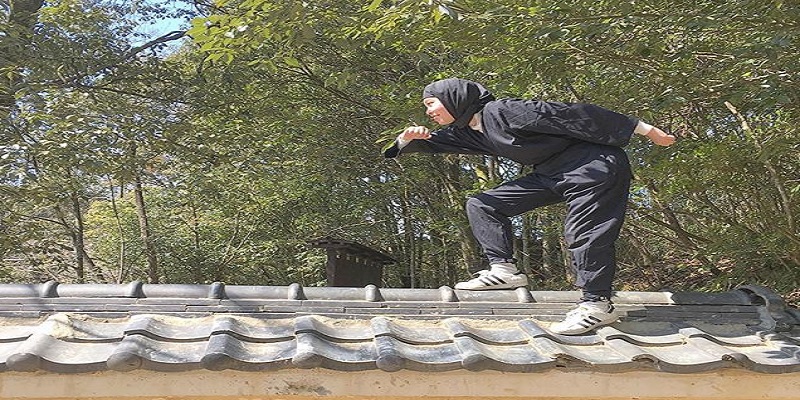

“Ninja Village” is the modern style of ninja village, located in Koka City, which is a ninja village, standing in a line with Iga.
In the site like a hidden village as used to be, there are scattered facilities, with the center at “Ninja Museum”, where introducing the real states of Koka samurai warriors by real tools and some references.
Such facilities are including a trick house, a pond of Mizugumo (ninja water-walking shoes), and a dojo (training hall) of throwing stars.
Wrapping actually your body with ninja costume, you can enjoy ninja experience, such as climbing up on the stone wall, and walking on the edge of a fence, and when you clear the nine barriers, you will be given a scroll of ninja full proficiency license.
There is no charge to experience ninja and there will be announce.
* May be canceled due to bad weather or congestion






Opening hours
10AM to 5PM (Last admission at 30 minutes before close.) *Varies depending on the day of a week and the season.
Holiday
Every Monday (if holiday, opens) * Opens everyday during summer vacation period, etc.
Admission
Adults: 1,100 Yen, High and Junior high school students 900 Yen, Children 800 Yen, Toddlers 600 Yen, Two years old and below free of charge (Including admission to the museum and the mechanism house)
Rental fee for ninja costume For Adults 1,100 Yen, for children 700 Yen (a hood needs 200 Yen separately)
Access
[By train] Free shuttle bus service is available from the north exit of “Koka” station of JR Kusatsu Line (Reservation required)
Shiga’s Attraction Map



Lake Biwa SUP Experience and Shirahige Shrine Visit in Takashima



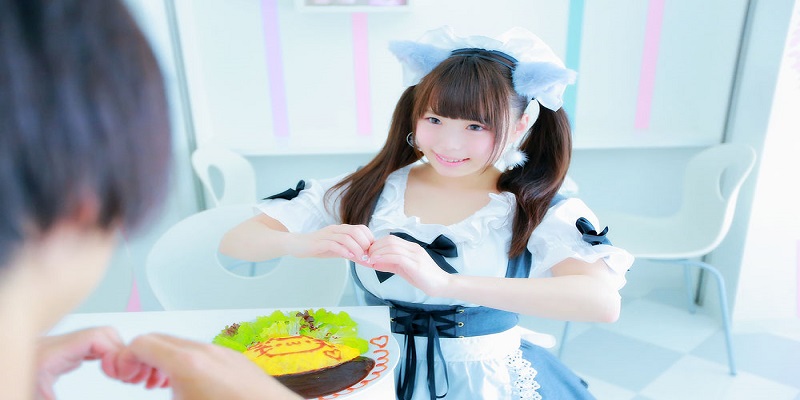






![11 Maid Cafe Ranking in Tokyo [Recommended even to beginners and ladies!]](https://jatrabridge.com/wp-content/uploads/slider/cache/11597c33ae53b47eb36a2f67968e635f/Maid-Cafe-Ranking-in-Tokyo2.3.jpg)
















